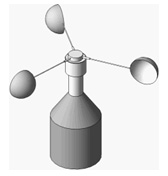
Source: Anemometer, WP Clipart
In this section we will look at some specific equipment used in 8th grade science.

Source: Anemometer, WP Clipart
An anemometer is used to measure wind speed. Cup anemometers are the most widely used anemometers. They are made of three to four hemispherical cups that form a cross if viewed from above. When the wind catches the cups it causes them to spin, and the number of times the cups rotate completely around is the wind speed measured in rpms (revolutions per minute).
Watch this short video clip to see an anemometer at work.
![]()
Source: Weather Station, Anemometer
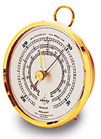
Source: Scientists Barometer, Nasco
A barometer is a scientific instrument used in meteorology to measure atmospheric pressure. Air pressure is measured in units called millibars.
There are two main types of barometers.
Mercury barometers are made from glass tubes. With one end sealed, the barometer tube is filled with mercury. Atmospheric pressures push down on the mercury reservoir, which forces mercury up into the column. As pressures decrease, the atmospheric weight on the reservoir decreases, and the mercury column shrinks. As pressures increase, the column goes up.
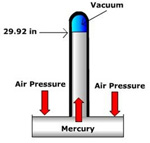
The second type of barometer is an aneroid barometer. Aneroid barometers contain beryllium and copper. The images below show the inside mechanism of an aneroid barometer.

Source: Aneroid barometer, Australian Government Bureau of Meteorology
Watch this video to learn how barometers work.
![]()
Source: Weather Barometers: How Does a Barometer Work, Ehow, YouTube
Weather and atmospheric pressure are closely related. Barometers play a crucial role in predicting weather. High readings on barometers mean there are high pressures in the area which means stable weather. When a barometer drops, that means a stormy low pressure cell is moving in.
Barometers often have 2 scales on them, both of which indicate air pressure. One scale measures millibars (mb) and the other scale measure the amount of mercury. The amount of mercury can be represented in inches or millimeters. Standard pressure at sea level is 1013.2 millibars or 29.92 inches (760 millimeters) of mercury. Look at the two images below. The first image shows a barometer with millibars and millimeters of mercury. The second one shows a barometer with millibars and inches of mercury.
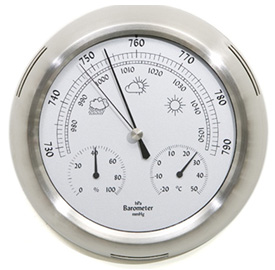
Source: Precision Barometer, Product Review
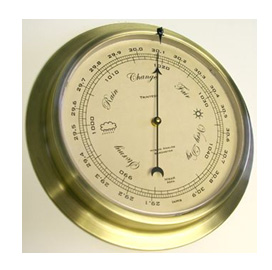
Source: Barometer, Dealers Advantage